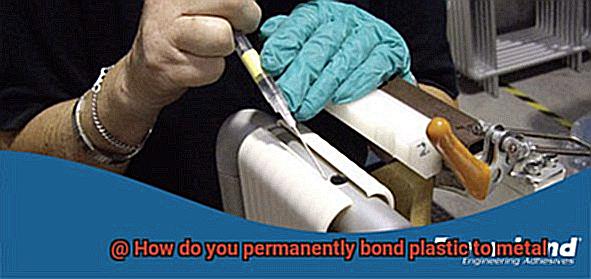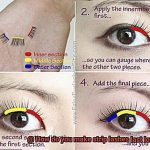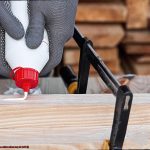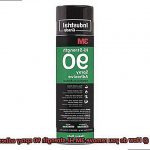Are you feeling overwhelmed by the thought of bonding plastic and metal together? Perhaps you’re trying to create a futuristic robot, a unique piece of jewelry, or fix a broken appliance. Whatever the project may be, the idea of permanently bonding these two materials can be daunting. But don’t worry, we’ve got you covered. In this post, we’ll explore everything you need to know about bonding plastic to metal and provide you with the confidence to tackle any project that requires this type of bonding.
There are many ways to bond plastic to metal, but not all methods are created equal. Some solutions might provide a quick fix but won’t hold up over time. It’s essential to consider strength, durability, and longevity when selecting your bonding method. Additionally, factors like the materials used and environmental conditions can impact the bonding process. But fear not. We will cover all of these factors and more in this post.
We’ll dive into effective methods for permanently bonding plastic to metal such as adhesives, welding techniques, and mechanical methods. Plus, we’ll highlight why surface preparation is crucial – from cleaning to sanding – in ensuring a strong bond. By the end of this read, you’ll have a complete understanding of how to bond plastic to metal effectively and permanently. So let’s get started on creating your next masterpiece.
What Adhesive is Best for Bonding Plastic to Metal?
Contents
- 1 What Adhesive is Best for Bonding Plastic to Metal?
- 2 How to Prepare the Surfaces for Bonding
- 3 Applying the Adhesive
- 4 Using Mechanical Fasteners in Addition to Adhesive Bonding
- 5 Benefits of Using Adhesive Bonding for Plastic to Metal Connections
- 6 Common Mistakes When Bonding Plastic and Metal
- 7 How Long Does it Take for the Bond to Set?
- 8 Tips to Make Sure Your Bond is Permanent
- 9 Conclusion
The process of bonding plastic to metal can be daunting, given the differences in surface properties between the two materials. However, with the right materials and techniques, you can create a strong, permanent bond that will stand the test of time.
When it comes to selecting an adhesive, not all adhesives are created equal. The best adhesive for bonding plastic to metal is a two-part epoxy adhesive. These adhesives are renowned for their strength and durability, making them perfect for this application. Two-part epoxy adhesives work by bonding two surfaces together through a chemical reaction between the resin and hardener. This results in a robust and long-lasting bond that can withstand heat, water, and chemicals.
To ensure success, it’s essential to follow the manufacturer’s instructions carefully when using a two-part epoxy adhesive. The resin and hardener must be mixed in precise proportions and applied evenly to both surfaces. After application, clamping the surfaces together until the adhesive has fully cured is critical.
It’s important to consider the type of plastic and metal involved while choosing an adhesive. Some plastics, such as polyethylene and polypropylene, have low surface energy that makes it difficult for adhesives to bond with them. In such cases, using a surface primer can improve adhesion.
Before applying the adhesive, preparing the surfaces is crucial. Thoroughly cleaning both the plastic and metal surfaces to remove any dirt, grease, or moisture is necessary. Sanding or roughening the surfaces can also improve adhesion by creating more bonding surface area.
In some instances, combining mechanical fasteners like screws or rivets with adhesives can provide additional strength and durability to the bond. This technique is particularly useful when joining materials that will be subjected to high stress or vibration.
How to Prepare the Surfaces for Bonding
If you need to bond plastic to metal, you must prepare the surfaces correctly. The success of the bonding process depends largely on how well you prepare the surfaces. Proper surface preparation ensures that the bond between the two materials is strong, durable, and long-lasting. Here are five essential steps to follow when preparing surfaces for bonding plastic to metal:
Step 1: Clean the surfaces
The first step is to clean both surfaces thoroughly. Dirt, grease, or oil on the surfaces can interfere with the adhesion of the adhesive or glue. You should use a mild detergent and water to clean the surfaces and then dry them with a clean cloth.
Step 2: Roughen up the surface
To improve the adhesion, roughen up both plastic and metal surfaces using sandpaper or a sanding block. This helps to create a surface that the glue or adhesive can grip onto. The roughening process increases the surface area available for bonding, which improves the strength and endurance of the bond.
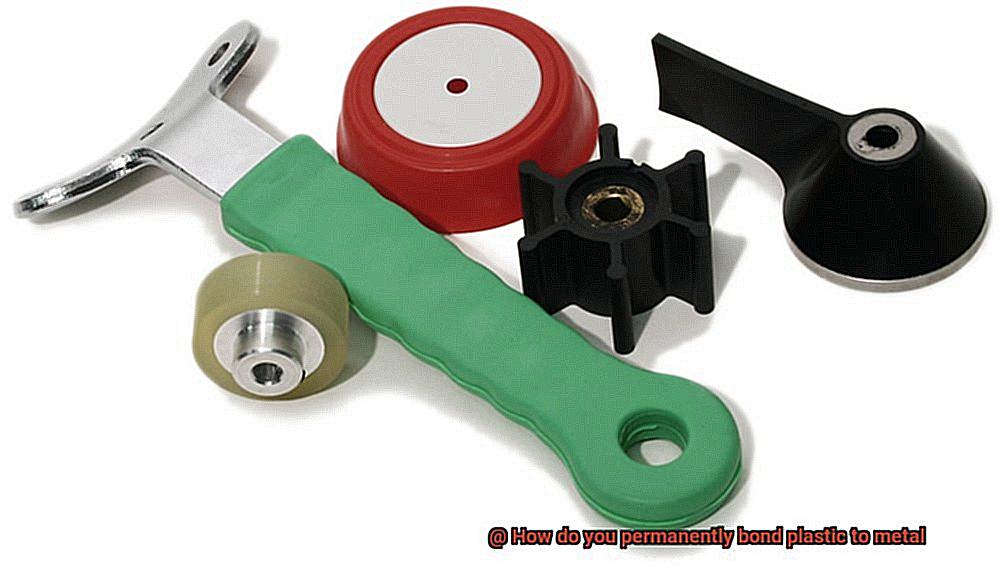
Step 3: Apply a primer
A primer can help improve the adhesion of the adhesive or glue to both plastic and metal surfaces. The primer should be applied according to the manufacturer’s instructions and left to dry completely before proceeding with bonding. It’s important to choose a primer that is compatible with both materials.
Step 4: Masking
It’s crucial to mask off any areas that don’t require bonding before applying the adhesive or glue. This ensures that only the intended areas are bonded together, and excess adhesive doesn’t cause any damage.
Step 5: Avoid touching the surfaces
Avoid touching the surfaces with your bare hands as this can transfer oils and dirt onto the surfaces, affecting adhesion. Wear gloves if necessary or handle the surfaces with clean tools or cloths.
Applying the Adhesive
The key to success lies in applying the right adhesive. But don’t worry, I’ve got you covered. Let’s dive into the three types of adhesive that work best for this task: epoxy, cyanoacrylate glue, and silicone adhesive.
Epoxy is a two-part adhesive that requires thorough mixing before application. It’s known for its remarkable bonding properties and ability to withstand high stress and temperature. To apply epoxy to plastic and metal surfaces, mix the two parts thoroughly and apply an even layer to both surfaces. After joining the surfaces together, apply pressure for several minutes to ensure a strong bond.
Cyanoacrylate glue, also known as super glue, is perfect for smaller projects or surfaces that don’t require high strength. Apply a small amount of glue to one surface and quickly press it onto the other surface. The bond will form almost instantly, so ensure proper alignment before making contact.
For larger projects or surfaces that require a more flexible bond, silicone adhesive can be used. It provides a sturdy bond while allowing for some flexibility. Apply an even layer of silicone adhesive to both surfaces and give it enough time to dry entirely before joining the two surfaces together.
Remember, before applying any adhesive, clean and prepare both plastic and metal surfaces thoroughly. By choosing the right type of adhesive for your project and following proper application techniques, you’ll achieve a strong and permanent bond between plastic and metal surfaces.
Using Mechanical Fasteners in Addition to Adhesive Bonding
When it comes to bonding plastic to metal, you want a bond that’s as unbreakable as the bond between Romeo and Juliet. While adhesives like epoxy, super glue, and silicone adhesive are excellent solutions for bonding these two materials together, using mechanical fasteners in addition to adhesive bonding can provide additional benefits worth considering.
By using screws, bolts, or other types of fasteners to hold plastic and metal together while the adhesive cures, you can provide additional strength and support to the bond. This method can help distribute stress and strain throughout the bond, preventing any one area from bearing too much weight or pressure. Plus, mechanical fasteners can be easily removed and replaced if necessary without damaging the underlying materials. This makes it easier to repair or replace parts that may become damaged over time.
However, it’s important to remember that using mechanical fasteners alone may not be enough to create a strong and lasting bond between plastic and metal. You still need an appropriate adhesive that is designed specifically for bonding these two materials together. Applying the adhesive evenly and in the correct amount is crucial to avoid any weak spots or gaps in the bond.
Here are some of the benefits of using mechanical fasteners in addition to adhesive bonding:
- Added strength: Mechanical fasteners provide additional strength and support to the bond, making it more durable in the long run.
- Easy repairs: The ability to easily remove and replace mechanical fasteners makes it simpler to repair or replace parts that may become damaged over time.
- Even distribution of stress: Using mechanical fasteners can help distribute stress and strain throughout the bond, preventing any one area from bearing too much weight or pressure.
Benefits of Using Adhesive Bonding for Plastic to Metal Connections
Not only does it create a strong and durable bond, but it also offers a plethora of other benefits.
Perhaps the most significant advantage of adhesive bonding is its ability to create a seamless connection between the plastic and metal. Traditional methods such as welding or mechanical fastening often leave visible marks or seams, which can be unsightly. Adhesive bonding, on the other hand, creates a smooth and aesthetically pleasing finish that looks professional and polished.
Moreover, adhesive bonding is incredibly versatile and can be used for a wide range of materials, including different types of plastics and metals. This makes it an ideal option for manufacturers who need to bond different materials together.
Another major benefit of adhesive bonding is its cost-effectiveness. As compared to traditional methods such as welding, adhesive bonding requires less equipment and labor, which ultimately saves time and money. Additionally, adhesive bonding reduces the need for additional finishing work, which further reduces costs.
But what about strength? Adhesive bonding creates a strong and durable bond that can withstand high stress and temperature changes without compromising its integrity. This method involves using a strong adhesive to create a chemical bond between the two materials.
Common Mistakes When Bonding Plastic and Metal
These errors can lead to weak or failed bonds, which can be frustrating and costly. In this article, I will share with you the most common mistakes people make when bonding plastic and metal, so you can avoid them and achieve a strong and permanent bond.
Mistake #1: Improper Surface Preparation
One of the biggest mistakes people make is not properly preparing the surfaces before bonding. It is crucial to clean both the plastic and metal surfaces thoroughly and degrease them before applying any adhesive. Dirt, oil, or residue can compromise the bond and cause it to fail. So, ensure that you clean the surfaces with a suitable solvent or alcohol-based cleaner before applying any adhesive.
Mistake #2: Using the Wrong Type of Adhesive
Another mistake is using the wrong type of adhesive for the materials being bonded. Not all adhesives are suitable for bonding plastic and metal together. Choosing an adhesive that is specifically designed for this purpose is important as it provides a strong and durable bond. So, do some research and choose an adhesive that is compatible with both plastic and metal surfaces.
Mistake #3: Not Allowing Enough Time for Curing
Many adhesives require a certain amount of time to fully cure and reach their maximum strength. Rushing the process or using the bonded item before the adhesive has fully cured can result in a weak bond or even complete failure. So, make sure you follow the manufacturer’s instructions regarding curing time, and don’t use the bonded item until the adhesive has fully cured.
Mistake #4: Not Applying Enough Pressure
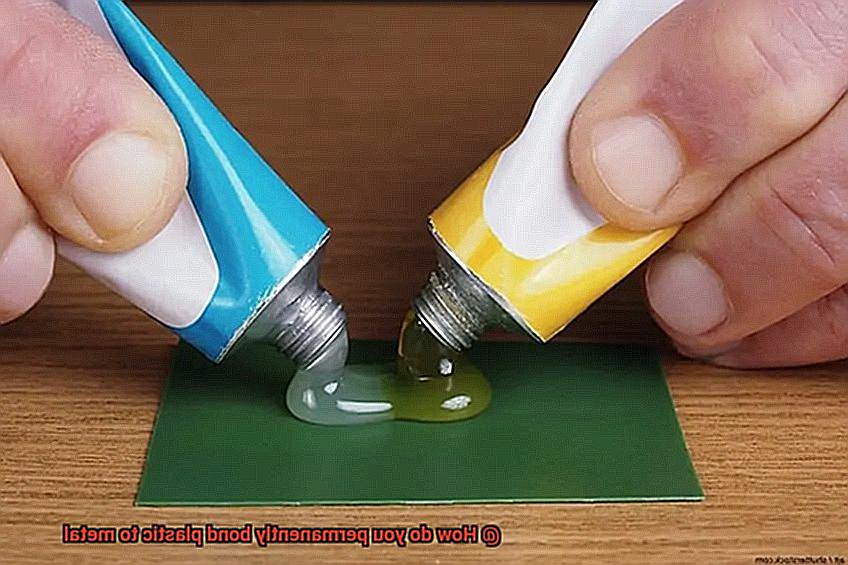
Finally, another common mistake is not applying enough pressure during the bonding process. Adequate pressure ensures that the adhesive makes full contact with both the plastic and metal surfaces, creating a strong bond. Without enough pressure, there may be gaps in the bond where the adhesive did not make full contact with one or both surfaces. So, make sure you apply enough pressure during the bonding process.
How Long Does it Take for the Bond to Set?
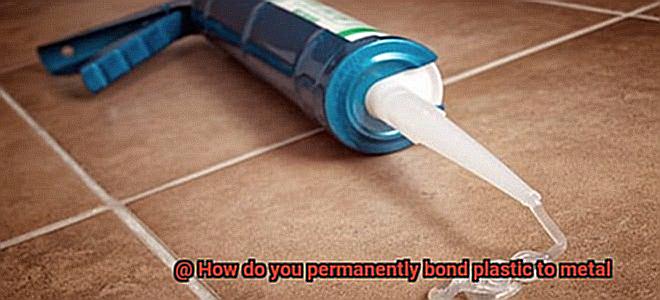
If you’re planning to bond plastic to metal, it’s vital to understand how long it takes for the bond to set. A weak bond can cause your project to fail and that’s just not worth the effort.
The setting time of the bond can vary depending on various factors such as the type of adhesive used, temperature, and humidity. Most adhesives start to set within minutes of application but may take several hours or even days to reach full strength, so patience is key when bonding plastic to metal.
It’s essential to follow the manufacturer’s instructions for the specific adhesive being used, as they will provide guidance on the appropriate setting time. For example, two-part epoxies may have a setting time of 5-10 minutes, but require 24 hours to reach full strength. On the other hand, cyanoacrylate (super glue) may set within seconds but can take up to 24 hours to reach maximum strength.
Temperature and humidity also play a crucial role in the setting time of adhesives. Higher temperatures can accelerate the process while lower temperatures can slow it down. Similarly, high humidity can cause slower curing times for some adhesives.
It’s important to allow sufficient time for the adhesive to fully cure before applying any stress or load-bearing activity on the bonded surfaces. Applying stress too soon can compromise the bond and lead to failure. So, be patient and allow enough time for the adhesive to work its magic.
Tips to Make Sure Your Bond is Permanent
When it comes to bonding plastic to metal, a permanent and strong bond is essential. Here are five tips to help you achieve that goal.
Thorough Surface Preparation
Proper cleaning and surface preparation are critical to making sure your bond is permanent. Use a degreaser or rubbing alcohol to clean both surfaces thoroughly, and then roughen them up with sandpaper or a wire brush to increase adhesion.
Select the Right Adhesive
Choosing the right adhesive is crucial to ensuring your bond is strong and long-lasting. Different types of adhesives work better on different materials, so make sure you choose an adhesive that’s specifically designed for bonding plastic to metal.
Consider Strength and Flexibility
The strength and flexibility of the adhesive are important factors to consider. A strong adhesive may be necessary for heavy-duty applications, but a more flexible adhesive may be better for applications where the bonded surfaces will be subjected to vibration or movement.
Use a Primer
Consider using a primer designed for plastic-to-metal bonding, as this can help improve the bond strength.
Allow Sufficient Time for Curing
Allow sufficient time for the adhesive to cure before subjecting the bond to any stress or pressure. Follow the manufacturer’s recommended curing time and avoid disturbing the bond until it has fully cured.
Conclusion
In conclusion, don’t let the challenge of bonding plastic to metal discourage you. With the right techniques and materials, a permanent bond can be achieved effectively. When selecting an adhesive, it’s crucial to consider strength, durability, and longevity. For this reason, two-part epoxy adhesives are the best option as they can withstand heat, water, and chemicals.
The key to a strong bond is proper surface preparation. This includes cleaning both surfaces thoroughly, roughening them up with sandpaper or a sanding block, applying a primer if necessary, masking off areas that don’t require bonding and avoiding touching the surfaces with bare hands.
For added strength and support to the bond, mechanical fasteners can be used in addition to adhesive bonding. Adhesive bonding offers numerous benefits such as creating a seamless connection between plastic and metal while being cost-effective.
To ensure a permanent bond between plastic and metal surfaces, avoid common mistakes like improper surface preparation or using the wrong type of adhesive. Also ensure sufficient curing time and pressure during the bonding process.
Remember these tips for achieving a strong bond: prepare surfaces thoroughly; select an adhesive based on strength and flexibility needs; use a primer if necessary; allow enough time for curing before subjecting the bond to stress or pressure.

